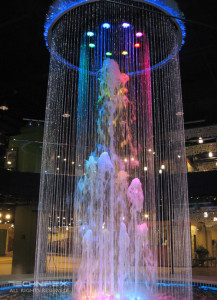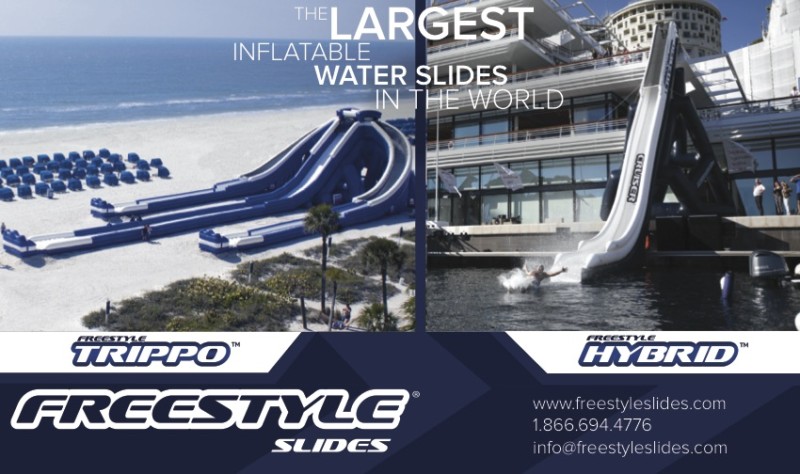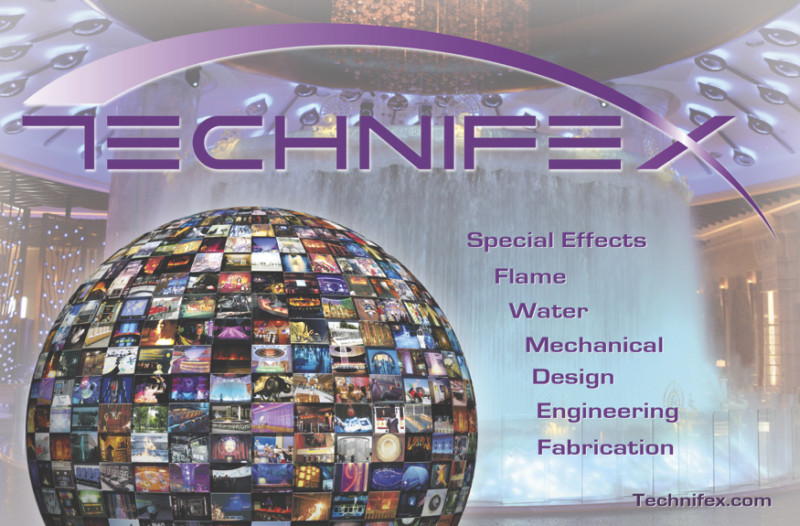Interview with Monty Lunde • by Kimberly Rily
[dropcap color=”#888″ type=”square”]I[/dropcap]nPark contributing editor Kimberly Rily spoke to industry leader Monty Lunde, CEO of Technifex and founder/past president of the Themed Entertainment Association, about markets, the creative process and the future.
Technifex has been involved in some great projects in the casino market as it has grown and changed over time. Where do you think things are headed, especially in light of rapid international expansion?
Gaming represents a very exciting market for themed entertainment suppliers and developers. Casino operators who understand the value of “Wow” are willing to take risks and invest in amazing must-see venues and attractions. Casino developers are also very interested in differentiating from their competitors, and attracting a demographic beyond gamblers.
Over the past 25 years, Native American gaming (US and Canada) has grown through government recognition of more tribes as sovereign nations – which expands their regional territory – as well as from existing tribal gaming venues investing consistently in upgrades. Improvements that are engaging and helping retain customers include entertainment technologies, higher quality food and beverage, hospitality and other amenities that now rival what used to be found only at top Las Vegas properties.
Internationally, Asia is experiencing the most rapid growth right now in the casinos market. Macau continues to build new facilities and major attractions at an impressive pace. Expansion is also occurring in other Asia-Pacific countries including the Philippines, Malaysia and Australia. This represents significant competition to Las Vegas. The gross gaming income in Macau alone has surpassed Las Vegas by several orders of magnitude.
There will be continuing demand for show technologies to augment gaming experiences for many years to come.
Your company has done some unique projects for municipalities and governments. What other ancillary markets are out there?
Zoos – seriously! Our industry has just started to scratch the surface relative to how we can enhance animal attractions and animal facilities. According to our client, Audubon Nature Institute, adding effects and interactivity to areas of the zoo is not only something that’s fun for visitors – it can positively engage the animals at the same time. There’s also a crossover of attraction types starting to happen – Audubon, for instance, has very successfully integrated a water park within their zoo.
Other markets where special effects and related technologies could play a larger role include educational facilities, trade shows, corporate brand centers, retail and historical sites.
What drives innovation and improvement at Technifex?
Our clients trust us to provide innovative and robust solutions, even when developing ideas that are one-offs. Doing something that’s never been done before is pretty much standard practice in themed entertainment; you have to always be raising the bar and differentiating. We take great pride in providing elegantly designed and engineered effects to our clients. Time and budget may impose creative limitations, but we strive to always provide show systems that create unique guest experiences. Even when we are implementing tried-and-true technologies, thinking about how we can make the process and end product better is in our DNA.
Please share some observations from your 30 years in the industry about the process of designing special effects, and how it’s been affected by new technology.
 There are far more technical systems available to us today. When my business partner Rock Hall and I first started Technifex in 1984, computers were rarely used in the design process, much less to control special effects. We used relays and cam timers a lot in those days. In general, the equipment and technologies available to us back then were designed for theater applications. Though there is certainly crossover, the duty cycles and performance requirements for equipment can differ significantly between theater and themed entertainment.
There are far more technical systems available to us today. When my business partner Rock Hall and I first started Technifex in 1984, computers were rarely used in the design process, much less to control special effects. We used relays and cam timers a lot in those days. In general, the equipment and technologies available to us back then were designed for theater applications. Though there is certainly crossover, the duty cycles and performance requirements for equipment can differ significantly between theater and themed entertainment.
Thanks to the Internet and the general growth of the attractions industry, access to information and specialty components has improved immensely. This translates into more sophisticated designs and the production of technical systems that integrate and communicate in ways not possible 30 years ago.
At Technifex, we typically follow the technology advancement curve in that most of our designs and end products are unique implementations of existing technology. Most clients don’t have the time or funds to have us invent new technologies, but modern computer design programs, access to a wide array of technologies and innovative thought can produce astounding results.
You have worked with many varied clients and collaborators. Is there a typical process that you go through for each new project, or does every project have a life and process of its own?
As much as possible, we try to implement a consistent and logical design and production process – but it must be adapted to each client’s schedule, budget, internal process and culture. Some clients dictate the entire process and it is our job to conform, while others simply give us the keys and say “don’t crash the car.”
Once we understand our client’s vision, we usually start the development process in small, incremental steps (concept, mock-up, schematic design, etc.), so the client can understand where things are going and participate in critical design and budget decisions before they commit full funding to a project.
Technifex has developed many different fire and water effects. What are some of the specific challenges of each?
There are often significant life safety considerations that affect how we engineer and manufacture flame systems. There are also stringent codes that we must adhere to relative to the use of fire in a show environment. When fire is in close proximity to an audience, the client and government scrutiny are very high, for justifiable reasons. Demonstrating to a local fire marshal that fire effects are safe can also be a challenge, but through proper engineering and sensitivity to their concerns, we have always received the necessary sign-offs.
When we develop water effects, the primary concern is more about engineering systems that won’t leak or grow some hideous mold! Our focus revolves around the proper engineering of pumps, filters and water treatment systems, as well as creating whatever water effect an art director envisions.
Recently, we have been developing technologies that combine both fire and water.
What are some of the ways you utilize projection technology?
Because they add so much to the guest experience, projection technologies will always be in Technifex’s “bag of tricks.” We are well known for creating “Pepper’s Ghost” (PG) type illusions for theme parks, casinos and trade shows. These PG systems involve reflecting projected images into a dimensional scene and can be quite complex. We also have several proprietary products that utilize projection systems, including our Flowscreen®, Tunnel Vision™ and Water Web™.
Projectors, media servers and all the interconnecting bits have become much more sophisticated and versatile. This provides us, as implementers, the ability to create incredible visually impactful show systems.
What do operators/developers need to consider when adding technology/effects to their project?
There are the obvious items to consider such as facility development and accommodation for the various show technologies that are planned for a given project. Finding a general contractor who understands how our industry operates and the unique construction requirements themed entertainment venues often require is key to controlling costs and developing a successful attraction.
It is also vital to include the technical systems suppliers in the earliest phases of design and project development. The technical input provided can be invaluable in terms of proving – or disproving – concept design feasibility. Critical facility information can also be incorporated into architectural packages and, most importantly, clients can gain a clearer picture of what a project will cost when they have technical input early in the design process.
To better assure long-term success, developers must also carefully consider their internal operations and maintenance capabilities. If a developer is going to make the financial commitment to build sophisticated and technically-advanced effects and show systems, they must also be prepared to finance and hire technical staff that can monitor and maintain these systems.
Tell us about the primary themed entertainment market – the parks – and where you see that heading in the near and far term.
As new theme parks continue to be developed in the Middle East, China and other parts of Asia, and existing US and European venues continue expanding, it feels like there is genuine energy and momentum within the amusement park industry. When you include the re-entry of Fox and Warner Bros. into the attractions market and the potential launch of DreamWorks amusement parks, all planning to dot the planet with their unique intellectual properties, we could be in the early stages of the most expansive growth the amusement park industry has ever seen.
Long-term: outer space. Seriously. Considering all of the energy and money being spent to get the general public into space, I’m eager to see who will build the first themed experience in space. (Not that being in space doesn’t qualify as a themed experience on its own.) I believe a themed experience in outer space could happen within the next 30 years, and I hope to live long enough to see it. • • •








